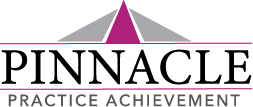Friday Philosophy 1 – “Blockbuster”
An area that is often difficult to improve or change in modern day practices is scheduling. The physical act of creating new or modified blocks or changing clinic hours is NOT the problem. The problem IS the effort involved to alter “pre-existing” scheduling mindsets. Allow me to explain. . .
Since the beginning of electronic appointment schedulers, we have been programmed to view each “slot” as a patient encounter (no matter how many columns, providers or time allotted to said slots). This way of scheduling was based on the idea that a higher volume of patients equated to more revenue, and at one time it was. . . BUT, those in practice for “a while” know (or should have realized by now) that concept flew out the proverbial window right around the time that “Blockbuster” stopped printing “Be Kind Rewind” stickers. Yes, that is a very old-fashioned phrase, and I will use it to demonstrate how an “old school” scheduling mindset can cause you to eventually close your doors (much like Blockbuster, although if you are looking for a road trip this summer, the last one standing is in Bend, Oregon).
Decreased reimbursement combined with increased administrative, compliance and audit related burdens continue to plague practices and I don’t see it getting better any time soon. Sorry to be a downer, but if you are paying attention to EOB’s and meeting with your billers regularly, you are fully aware of how little insurers are paying and the hoops you are jumping through to receive pennies on past dollars. We will save my theory on problem payers for another part of this series.
For now, ask yourself a question. . . On any given clinic day, would you rather have a full schedule (40 patients, many of which are hyper-needy and non-compliant with low paying insurance) and a per visit value (PVV) of $80 or, control your schedule (setting limits on certain types of patients/payers and establishing goals of new patients) treating an average of 25 patients with a PVV of $140?
If we do the math, option one brings in $3200 and requires 40 eligibility and benefit checks, a large number of prior-authorizations, referrals, 40 chart notes, scrubbing and submission of 40 claims/encounters. Option two brings in $3500 and requires 37% less “manpower” for 9% more money. I know which I would choose but hey it’s your video store!
Just something to think about. . . Stay tuned for our next Friday Philosophy!
